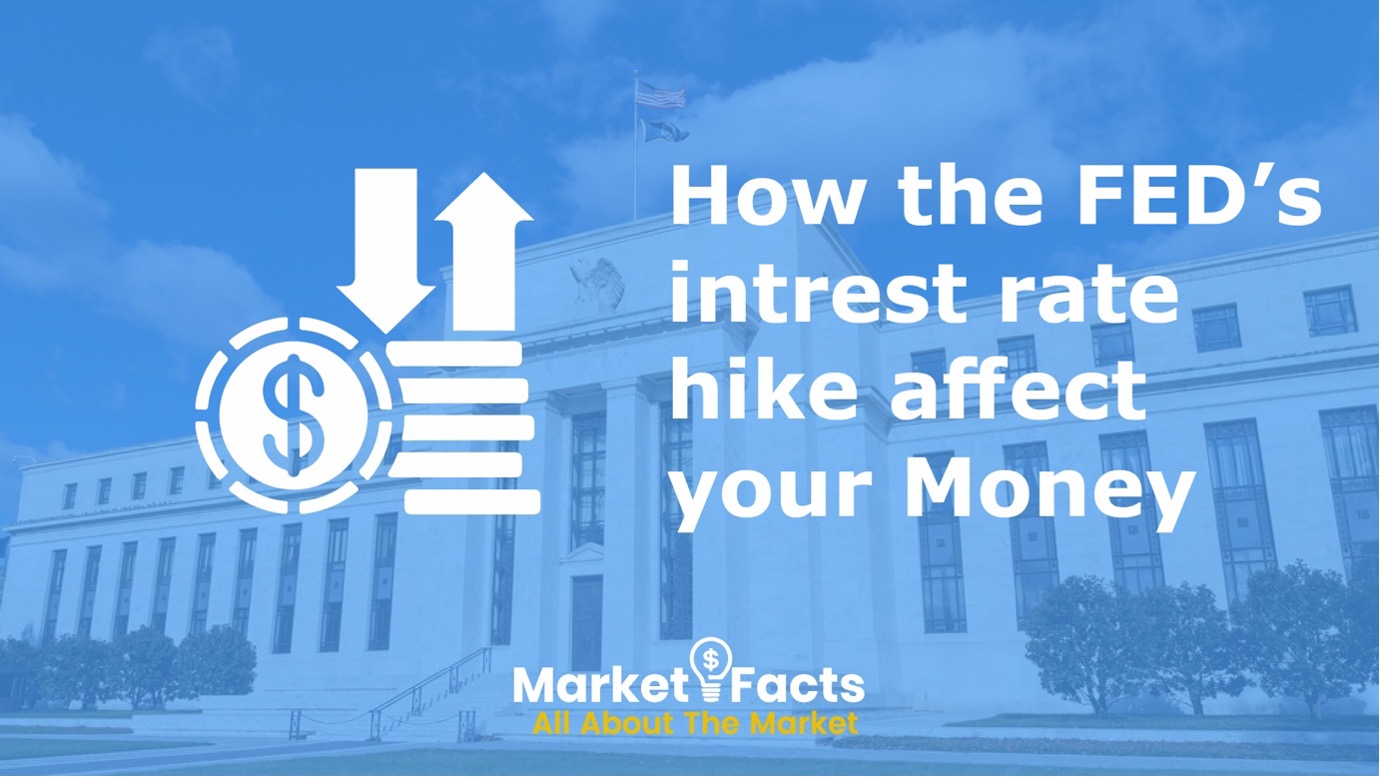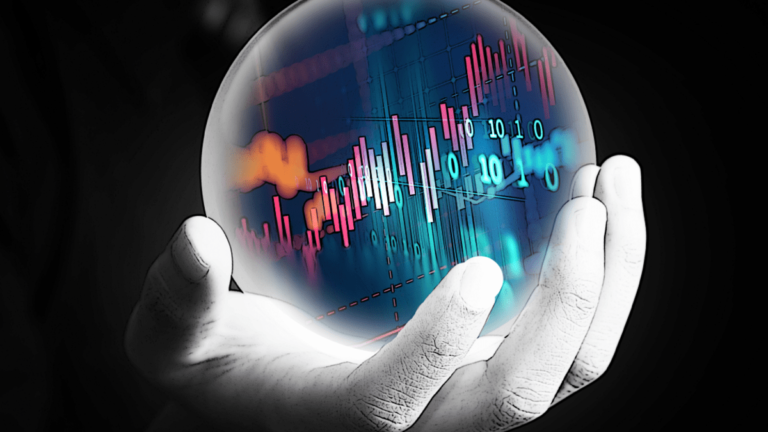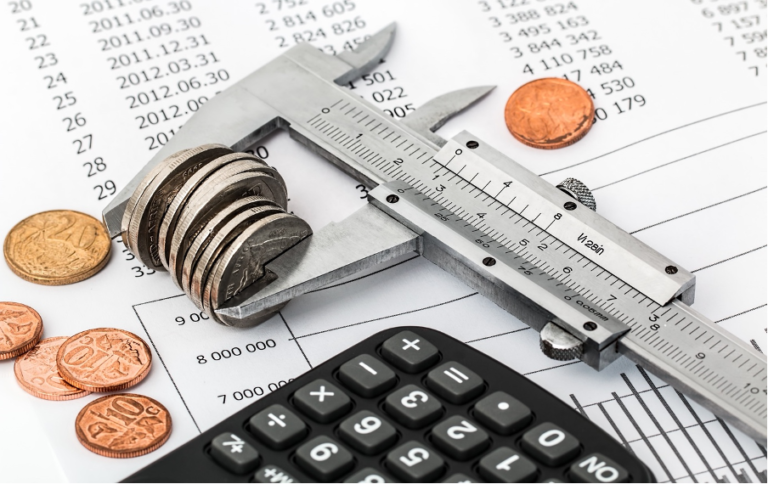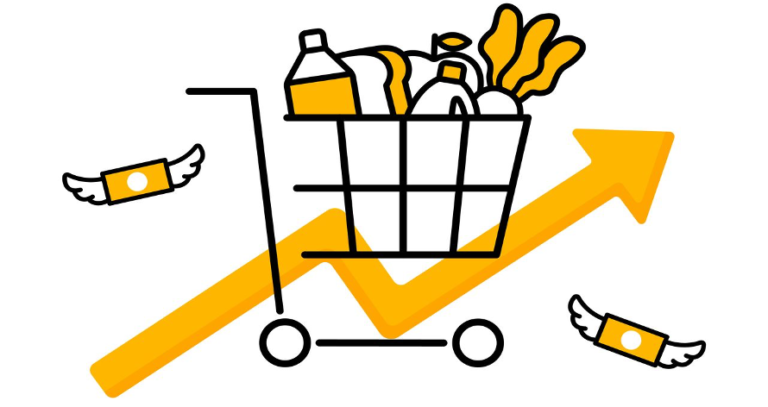How The Fed’s Interest Rate Hike Affect Your Money
The Federal Reserve’s goal is to maintain a healthy economic climate in the United States. Disturbances like inflation and asset bubbles may get out of hand and undermine economic stability when the economy is booming and running hot.
When inflation threatens to spiral out of control, the Federal Reserve typically responds by raising interest rates to restore stability and slow inflation. This year the federal funds rate set by the Federal Reserve has been a hot topic of discussion and rightly so.
Since March 2022, the Fed has hiked the rates five times, making this year’s total the most number of rises since 2005. On September 21st, the rate reached a new all-time high by crossing the 3% threshold.
From savings and investments to purchasing power and even job security, the Federal Reserve may affect the finances in six key ways.
Market Reaction: Effect on Stocks
The stock market often suffers when interest rates rises. Businesses’ operating expenses increase when the interest rates rises as it costs more to borrow money. For publicly traded companies, an increase in expenses and a slowdown in operations might eventually lead to decreased sales and profits, which could slow the company’s pace of growth and reduce its stock price.
When the price of borrowing money from banks rises, businesses are less likely to expand their investment in capital equipment hindering the growth of company. When the interest rate are too high it makes expansion quite difficult for many businesses.
A rise in Fed interest rates has a more direct effect on investor sentiment or the way people see the market. Some investors may immediately liquidate their stock holdings and switch to safer assets in response to a rate rise announcement from the FED.
Effect on Bonds
Bond prices are highly responsive to changes in the interest rate. As soon as the Fed raises interest rates, bond prices in the market begin to fall. A fundamental principle of bond investing is that market interest rates and bond prices generally move in opposite directions. When market interest rates rise, prices of fixed-rate bonds fall. this phenomenon is known as interest rate risk. This is due to the upcoming issuance of new bonds at attractive interest rate premiums. The seesaw effect between interest rates and bond prices applies to all bonds, even to those that are insured or guaranteed by the U.S. government.
The interest rate environment changed dramatically in 2022. While the benchmark 10-year U.S. Treasury note yielded 1.5% at the end of 2021, the yield topped 3% by May. In June, the 10-year Treasury yield reached its highest level in 11 years, 3.485%
Effects on Consumer Spending
The Federal Reserve’s interest rate choices have implications beyond the borrowing cost and the savings rate. The economy, and hence consumers’ ability to spend money, is severely influenced by all these aspects.
An increase in mortgage rates, for instance, might dampen housing demand, which can drag down property prices. Although the Fed has a large impact on consumer demand for expensive expenditures like new homes, there are some things the Fed cannot control. The trajectory of prices may depend more on things like global supply-chain disruptions since commodities like food at the grocery store and energy prices, for example, are less responsive to interest rate hikes. Now that the macro climate isn’t favourable, firms and consumers may be hesitant to make any new investments or make new purchases.
Effects on Bank Deposits and Savings Accounts
Interest rates might be problematic for borrowers, but it would be welcome news for savers. That’s because the Fed Funds Rate is also used as a reference point for the yearly percentage yields on deposit accounts.
When the Federal Open Market Committee hikes rates, the deposit interest rate rises. The annual percentage yields (APYs) on savings accounts, checking accounts, CDs, and money market accounts go up.
Effects on Job Market
The jobs market is among the sectors hit most by interest rate hikes. The Fed’s rate increases may eventually cause unemployment to rise significantly and job chances to decline. Businesses may delay recruiting new employees or even fire existing ones as a result of the slowing demand and resulting decline in corporate earnings. Growth plans feasible when resources were abundant may now have to be postponed. Low lending rates, which had opened new possibilities, are now obsolete.
The unemployment rate increased to 3.7 percent in August from 3.5 percent the previous month, signalling that the labor market is starting to show signs of weakness.
Effects on Consumer Loans
Home loans, Personal loans, credit card balances, and credit line balances all react more quickly to rises in Fed rates than do business loans. Interest rates on variable-rate loans are linked to benchmarks that, in turn, reference the fed funds rate, making them especially vulnerable to Fed rate fluctuations.
Although interest rates on current fixed-rate loans are unaffected by changes in the fed funds rate, rates on new loans may increase.
The Bottom Line
If you don’t want to lose money, don’t oppose the Fed. It usually indicates that investors should alter their actions in line with changes in monetary policy.
If interest rates are expected to rise, it’s even more crucial to be cautious with the money, such as saving up an emergency fund and contingencies, making changes in personal budgets and shifting the investments to more lucrative avenues. One may gain financial flexibility in a rate hike scenario by improving the credit, paying off high-interest debt, or refinancing at a lower rate.
There are two more meetings of the Federal Open Market Committee scheduled in 2022 (on November 1-2 and December 13-14), at which point the Fed may choose to alter the Fed rate if it so chooses. It also can make quick adjustments in an emergency.
We should expect further rate hikes if inflation is not controlled, which has been the main reason behind the recent hikes.






